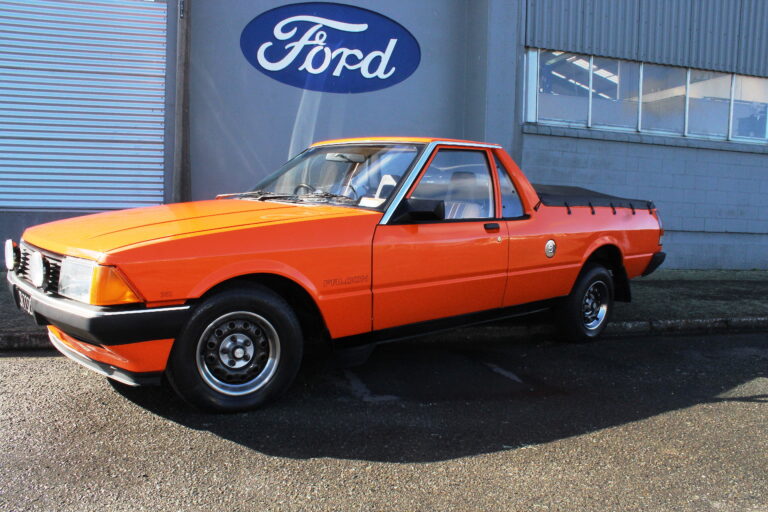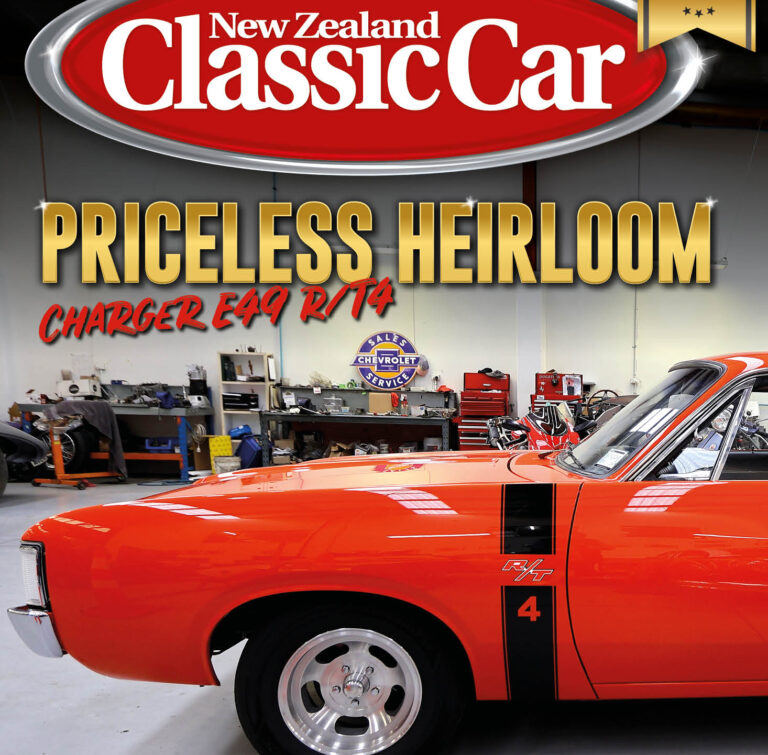With its well-proportioned styling, supple suspension, luxurious interior, and silky XK power, the XJ6 represented an important advance for the Jaguar. Initially available at a price less than £2500, the XJ6 snatched leadership of the sports saloon away from their main rivals, BMW and Mercedes-Benz.
Alas, with Jaguar firmly within British Leyland’s grasp, usually high build standards began to slip. The 2.8-litre entry-level XJ6 — never particularly popular — was dropped, while reliability problems with the remaining models tarnished Jaguar’s previously impeccable reputation.
Pininfarina was called in to ‘square off’ the XJ6 for its SIII form, and the consequent restyling produced a slightly higher roofline, removed the opening quarter lights, and introduced bonded-in front and rear screens. The Lucas Bosch L-Jetronic system became standard on the 4.2, although the 3.4 continued to use twin SU carburettors.
During the SIII’s production run, Jaguar and the XJ6 began the climb back from the brink of disaster, and the XJ6 slowly improved until, by the time it was due for replacement in 1987, all reliability problems had been solved.
Buying a Jaguar XJ6

Today, the XJ6 is a remarkably inexpensive prospect for the classic car enthusiast, but that comment only applies to the initial purchase price! The XJ6 is a fast, luxurious saloon with a sophisticated mechanical specification that requires careful maintenance, and could hardly be seen as an economy car as its appetite for petrol is considerable. Buy incorrectly — or underestimate the XJ6’s complexity — and your new purchase will soon be soaking up lots of hard-earned dollars. Having said that, anyone with sound mechanical knowledge should be able to handle most XJ6 repair tasks.
Service history
As with most classic cars, one of the most important aspects to consider when thinking about an XJ6 purchase is service history – any car that has not been scrupulously maintained should be given a wide berth. If the car has been owner-maintained then you must use your own best judgment! Checking a prospective purchase involves going through all the normal procedures: check for rust in the bolt-on front wings (and remember that SI wings are unavailable new), along the base of the front and rear screens, and on the sills. The XJ6 has very heavy doors so check out the hinges for signs of cracking. It also pays to check out the condition of the rear-wing–mounted twin fuel tanks — any rust there will require removal of the tanks, which is not a job for the faint-hearted.
Interior, engine, and transmission

Moving to the interior, check the carpets for any signs of water leakage — especially in SII cars. If fitted with leather trim, test its suppleness. Faded leather can be revived but badly cracked and split upholstery can lead to hefty re-trim costs. If you are looking at an SII or early SIII car don’t forget to check out that all the electrical gadgets work properly. Avoid engines that are hidden under years of oily grime, and check cylinder compressions (160–180psi when new) and oil pressure — a healthy engine will idle at 30psi. Check the condition of the oil — if it’s black and gritty it’s likely that oil has been changed infrequently. Don’t be overly concerned by any timing chain rattle on start-up — that is normal, and it should quieten down as the engine warms up. However, if the rattle doesn’t go away then a new timing chain may be required. Rumbles from the bottom end are more serious and could indicate expensive big-end or crankshaft woes. The tendency to burn pistons was seen in the 2.8 engines, but these early cars are now difficult to find, and the 4.2 is a much better engine. Early auto transmissions can be fragile, especially if neglected, so check out the condition and the level of the fluid. Later auto boxes can be fitted into earlier cars, and this is a good idea if you suspect a worn transmission.
The road test

Most other aspects can be checked on a road-test – look out for creaking from the suspension, or grating from the steering. A suspension overhaul can be expensive and anything seriously awry with the normally finger-light power steering will also cost plenty. Watch out for clunking or jerkiness in auto cars, and, although signs of synchromesh wear in manual gearboxes may be noticeable, severe graunching could mean something more serious. Keep your eyes on the oil pressure, which shouldn’t drop below 30psi and should be able to hold 40psi at 3000rpm. If blue exhaust smoke accompanies sharp acceleration and deceleration, a major engine rebuild is probably in order.
If you’re not sure of your own abilities to perform all the necessary checks yourself, get in touch with a Jaguar specialist — most will be happy to carry out a pre-purchase check. It’s also a wise move to get in touch with your local Jaguar club — they’re always a good source of reliable knowledge. At the very least there are plenty of excellent books covering the purchase and restoration of the XJ6 — buy one and consult it before you start spending!
As for prices, the range probably runs from less than $1000 for a tired runner or donor car, up to $6000–$8000 for a late-model car in good, usable condition. Fully restored and original cars in excellent condition will, naturally, attract the highest prices — we’ve seen one or two gorgeous SI XJ6s going for up to $15,000.
Pick the right car and you will have many years of enjoyable motoring, allow yourself to be tempted by a ‘cheap runner’ and you may live to regret it!
New Zealand Classic Car’s best buy
Jaguar XJ6 S1 4.2 Manual/Overdrive
The most traditional of all the XJ6s, the SI has a splendidly evocative dashboard and a much more imposing front grille than the later cars. In terms of performance, the auto and manual SI XJ6s were only bettered by the later SIII in manual form. Current prices reflect the more exclusive qualities of the SI, and with prices for XJ6s showing an increase, the manual/overdrive SI 4.2 models lead the way.
The Kiwi XJ6
There were 1266 SI and SII Jaguar XJ6 4.2 automatic-transmission cars assembled in Nelson, along with around 60 2.8 SI (both manual/overdrive cars and automatic versions).
Initially, the 4.2 automatic XJ6 carried a list price of $9450, a 2.8 auto $8430, and the 2.8 manual/overdrive $8310. SII cars were first assembled locally from 1974, and by the time assembly ceased in 1979, the price for a 4.2 auto model had climbed to $24,500.
Further reading
- Jaguar World Monthly on Jaguar XJ6 Series 1 to 3 (Jaguar World)
- Jaguar XJ6 1969–1986 Restoration Manual, 2nd Edtn by Dave Pollard (Haynes)
- Jaguar XJ5 Series 1 and 2 Gold Portfolio (Brooklands Books)
- Jaguar XJ6 Series 3 Performance Portfolio (Brooklands Books)
Jaguar XJ6 / Daimler Sovereign production
SI — September, 1968–July , 1973
- XJ2 2.8: 19,426 (Jaguar) / 3221 (Daimler) (1968–’72 UK / 1968–’73 export only)
- XJ6 4.2: 59,556 (Jaguar) / 11,522 (Daimler)
SII — September, 1973–February, 1979
- XJ6 2.8: 170 (Export only)
- XJ6 3.4: 6490 (Jaguar) / 2347 (Daimler) (April, 1975– February, 1979)
- XJ6 4.2: 63,282 (Jaguar) / 2431 (Daimler) (SWB September, 1973–November, 1974 / LWB September, 1973–February, 1979)
SIII — March, 1979–April, 1987
- XJ6 3.4: N/K
- XJ6 4.2: 27,261 (Jaguar) / 20,490 (Daimler)
Jaguar XJ6 S1 4.2
- Engine: six-cylinder, in-line
- Capacity: 4235cc
- Max power: 129kW @ 4750rpm
- Max torque: 308Nm @ 3000rpm
- Transmission: Borg-Warner three-speed auto (optional Jaguar four-speed manual/overdrive)
- Brakes: Girling four-wheel discs with vacuum servo
- Suspension: Fully independent
- Max speed: 193kph (auto) / 200kph (manual)


